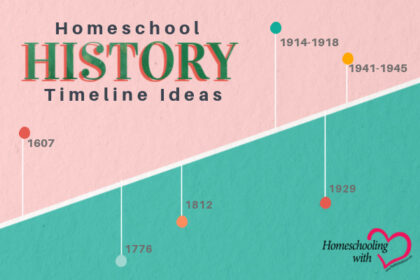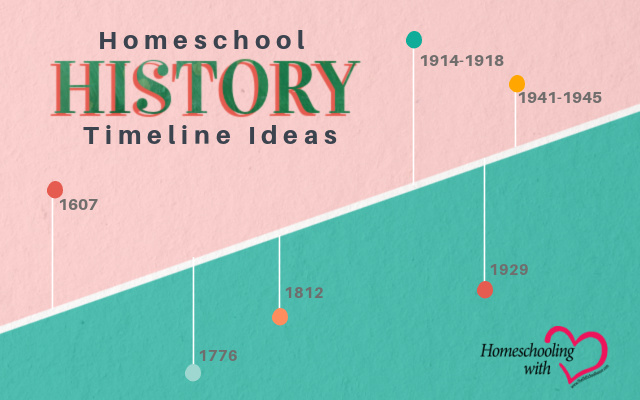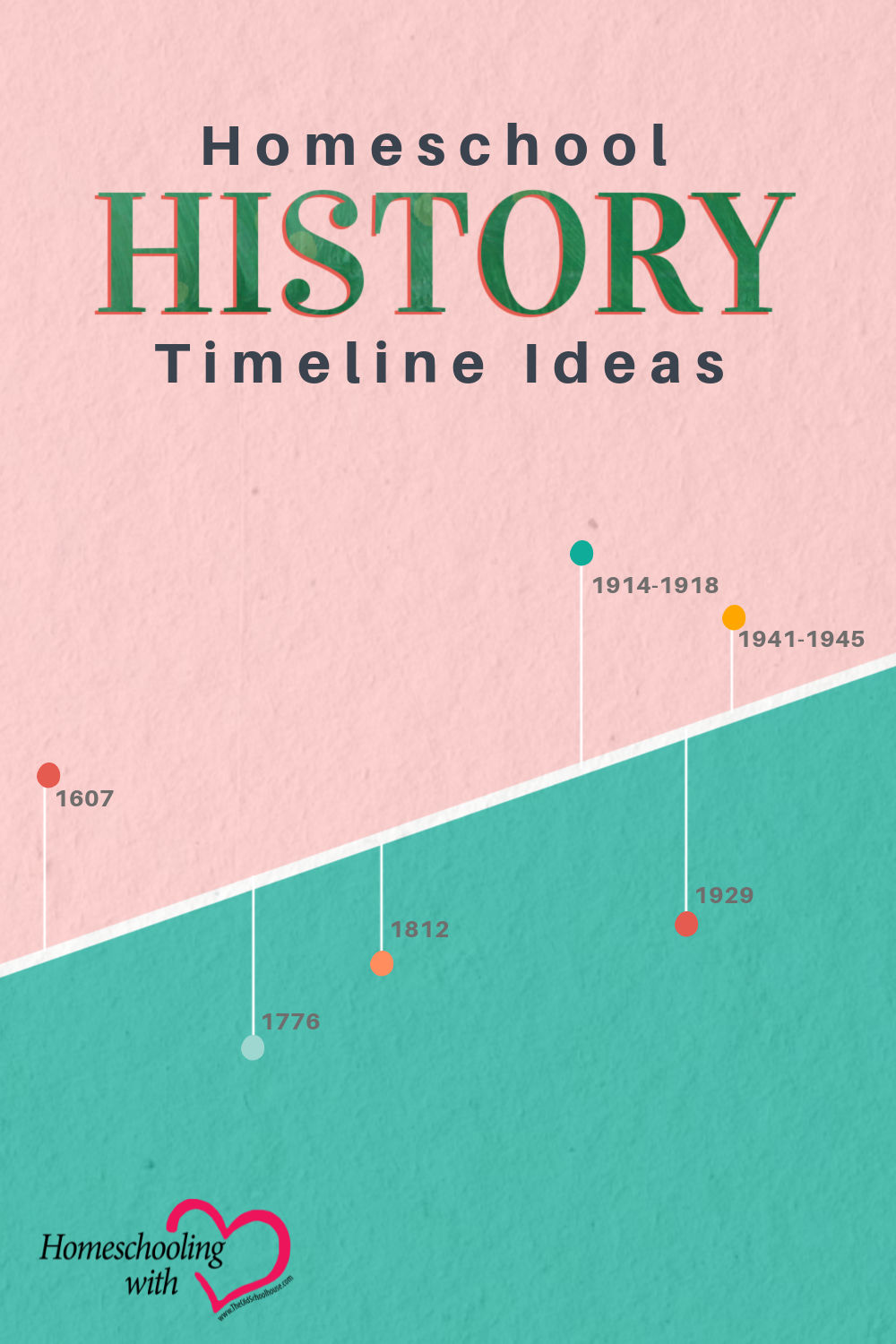Homeschool History Timeline Ideas


When I was in school, they taught American history separate from world history, and European history separate from the history of the rest of the world. It was so disjointed that as a child, it never occurred to me that events in different parts of the world were happening at the same time. So, when I started homeschooling my children and learned about a homeschool history timeline, I loved the idea. Finally, I could have a visual representation of concurrent historical events, and my children wouldn’t suffer the same ignorance as I had.
I found several different ways to do a homeschool history timeline. Maybe you’ve heard of these, too. But, just in case, here are the ideas I’ve come across over the years. I have included my own experiences with them since I have tried most of them during the past 20 years.
Homeschool History Timeline Ideas
Timeline figures
Some of my children really enjoyed coloring and cutting out timeline figures. There are several varieties of these available. Some even have articulated arms and legs! Others are simply coloring pages you can print. But, after they cut them out, they put them in chronological order across the kitchen and dining room walls. This provided a huge homeschool history timeline that was always visible. It even brought comments and questions from visiting family and friends. You can sample this idea with the three units in Figures in History, offered by SchoolhouseTeachers.com. The three figures are Harriet Beecher Stowe, Robert E. Lee, and Charlemagne.
Timeline books
We couldn’t keep figures on the walls all time so we also kept timeline century books. These books included smaller versions of the figures on the walls with a continuous timeline from Creation to beyond modern day. Several companies offer pre-printed timeline pages for these books. Or, you can simply fill a 3-ring binder with white cardstock and use a permanent black market to mark your own homeschool history timeline.
Another way to do this is to create thematic lapbooks, such as Lapbooking Through the Ages. If you use this method, you can create lapbooks based on time period or topic. Then, you simply keep them together in approximate chronological order in an expandable folder. We have tried this idea as well. It allowed the kids to take a deep dive into a particular historical theme, such as inventions. We created the lapbook and then inserted figures and such into the larger century book. That way we could see how everything fit together.
Wall Chart
If you don’t have a lot of space but you still want something highly visual that kids can see every day, you could try a large wall chart. These charts mark centuries from top to bottom (or the reverse). Then, kids either add small figures or simply write significant historical figures and events in the appropriate place. It’s a bit like the above two homeschool history timelines but is much more compact. Alternatively, a history calendar can track This Day in History throughout the year. With this idea, you write in historical events on a regular one-year calendar. At the end of the year, you have a keepsake of all kinds of significant happenings. The only downside is that you can only see one month at a time and of course, the squares are small. But it does give kids a sense of the greater flow of things.
Timeline Cards
Finally, I once used timeline cards as a hands-on alternative to the book. It offered a way to play games since I could mix up the cards and then see if they could put them back in the right order. Another way we played with them was to show the front of the card and then ask trivia type questions about the pictured person or event based on the information on the back of the card. A couple of different companies offer them ready-made, but you can create your own. They offer a nice middle ground between a homeschool history timeline book and large figures on your wall, not to mention the games I described.
With all these ideas, why not use a homeschool history timeline in your home? Your kids will experience history in a whole new way that will help them see the greater flow of time. They will also have a greater appreciation for His Story across cultures and continents.













































